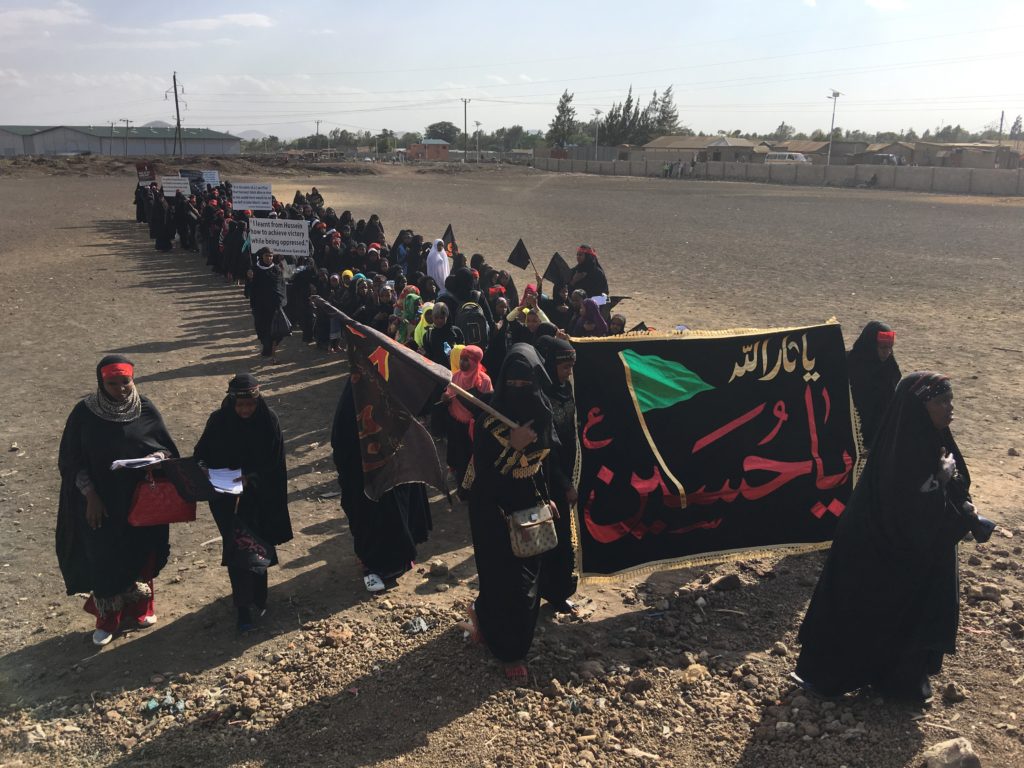-

Associate Professor Dr. Mara Leichtman publishes an article in The Conversation
Department of Anthropology Associate Professor Dr. Mara Leichtman published an article in The Conversation, which is a nonprofit independent news organization. Dr. Leichtman’s article, titled, “How Shiite Islam reached Tanzania, and Ashoura processions became an annual tradition,” is based on her fieldwork conducted in Tanzania this past summer. This article provides a brief history of […]
-

Anthropology Grad Student Spotlight: Kelsey Merreck Wagner – Human-environment relationships and art as activism
By Katie Nicpon Passionate about the intersection of people, animals, environment and activism, Kelsey Merreck Wagner is a Ph.D. candidate in the MSU Anthropology program and is also an artist. Since the pandemic, she has been weaving community trash into tapestries and preparing for her dissertation research trip to Thailand in October. MSU Anthropology PhD […]
-
Dr. Barbara Rose Johnston, Adjunct Professor of Anthropology at Michigan State University, has been honored with a named award. At the annual American Anthropological Association (AAA) meeting this year the AAA Environment & Anthropology Society is launching the new award: Barbara Rose Johnston Travel Award.
Barbara Rose Johnston Travel Award is a $1000 competitive grant to allow a society member at any stage in their career who lack institutional support to attend the AAA annual meeting and formally participate in Environment and Anthropology Society sessions. This competition is open to any member of the Society who lacks institutional support for […]
-
Ph.D. Candidate Kiana Sakimehr wins the 2022 John F. Richards Fellowship offered by the American Institute of Afghanistan Studies (AIAS)
The Department of Anthropology is pleased to announce that Ph.D. candidate Kiana Sakimehr has been awarded the John F. Richards Fellowship by the American Institute of Afghanistan Studies (AIAS). This institute is a private and non-profit organization located at Boston University and headed by scholars to promote and support the study of Afghanistan. Kiana will […]
-
Associate Professor Dr. Masako Fujita publishes in the American Journal of Biological Anthropology
Department of Anthropology Associate Professor Dr. Masako Fujita and co-authors Katherine Wander, Tin Tran, and Eleanor Brindle recently published an article in the American Journal of Biological Anthropology. The article is titled “Characterizing the extent human milk folate is buffered against maternal malnutrition and infection in drought-stricken northern Kenya.” This publication investigates whether and how […]
-
Associate Professor Dr. Elizabeth Drexler publishes in Oxford University Press’ International Journal of Transitional Justice
Department of Anthropology Associate Professor Dr. Elizabeth Drexler publishes in the International Journal of Transitional Justice. The article, titled, “Impunity and Transitional Justice in Indonesia: Aksi Kamisan’s Circular Time” argues the Indonesian weekly Thursday silent protests by victims’ families, create sites of justice bringing together technical legal demands with compelling artistic performance to highlight the […]
-
Ph.D. Student Emily Milton and Assistant Professor Kurt Rademaker publish in the Journal of Archaeological Science
Department of Anthropology Ph.D. student Emily Milton published her Master of Arts research in the Journal of Archaeological Science with co-authors Dr. Kurt Rademaker, Dr. Nathan D. Stansell (Northern Illinois University), Drs Hervé Bocherens and Döbereiner Chala-Aldana (University of Tübingen, Germany), and Annalis Brownlee (University of Alaska-Anchorage). The article, titled, “Examining surface water δ18O and […]
-
Associate Professor Dr. Joe Hefner and Ph.D. Candidate Micayla Spiros co-publish in the University of Florida Press’ Forensic Anthropology Journal
Department of Anthropology Associate Professor Dr. Joe Hefner and Ph.D. Candidate Micayla Spiros and co-authors Sherry Nakhaeizadeh, Tim J.U. Thompson, Ruth M. Morgan, Viktor Olsson, Alexandra Berivoe, and Martin Arvidsson published their work in the University of Florida Press’ Forensic Anthropology Journal. The article is titled “Using Eye-Tracking Technology to Quantify the Effect of Experience […]
-
Associate Professor Dr. Masako Fujita co-authors article in Evolution, Medicine, and Public Health
Department of Anthropology Associate Professor Dr. Masako Fujita and co-authors Katherine Wander, Siobhan Mattison, Blandina Mmbaga and others publish in Evolution, Medicine, and Public Health. The article is titled “Tradeoffs in milk immunity affect infant infectious disease risk.” The article discusses research on milk immune activity, a new area of research, among almost 100 breastfeeding mother–infant dyads in Kilimanjaro, […]
-
Assistant Professor Dr. Lucero Radonic, Ph.D. Candidate Cara Jacob, alumna Dr. Rowen Kalman, and community partner Yvonne Lewis co-publish in Case Studies in the Environment
Department of Anthropology Assistant Professor Dr. Lucero Radonic, Ph.D. Candidate Cara Jacob, alumna Dr. Rowen Kalman, and community partner Yvonne Lewis co-publish in Case Studies in the Environment. The article is titled “Questionable Quality: Using Photovoice to Document Women’s Experiences of Water Insecurity in Flint, USA.” The article discusses a Flint, Michigan based community-based participatory […]